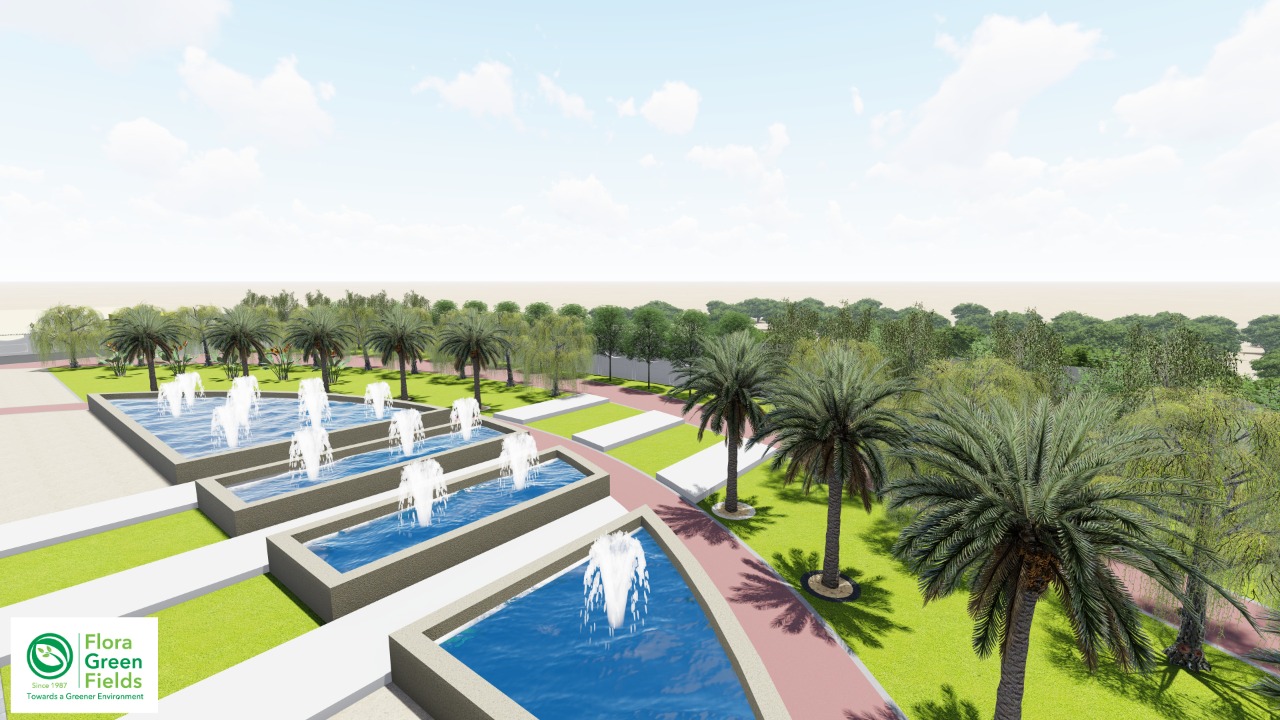







The hardscapes consist of coloured gravels, gazebo structures, barbeque facilities, water fountains, jogging tracks and sports areas. Multi-factors were considered to minimize the landscaping requirements (e.g., irrigation and maintenance) and costs, while creating multi-functional areas that add value to the site (e.g., sports, barbeque, meditation, recreational areas, sitting & walking areas).
The design should maintain a balance between softscapes and hardscapes in order to achieve the desired level of greenery while minimising costs. Also, the design should make good use of the landscape to enhance the functionality of the landscaping area.
There is a real need to use hardscapes in landscapes located in arid regions to reduce dependency on cultivated softscapes & their related requirements (watering, maintenance & costs), while creating interesting features & functional areas in the landscape. One of the key lessons learned is, while planning for a landscape in the desert region, try to best construct & implement hardscaping components (e.g., mulch, colored stones, gazebo, barbeque areas, recycled water fountain) to enrich the diversity & functionality of the established sustainable landscape, while reducing the irrigation water needs, maintainance & total costs. What mostly make sense to the landscapes' visitors is the the general overview of landscape & how it's interesting to the eye, while creating functional areas, & not necessaarly the big number of cultivated plants is the only significant factor to establish a landscape. Thus, best use both hardscapes & softscapes together & alternatly to create a sustainable interesting landscape in arid lands